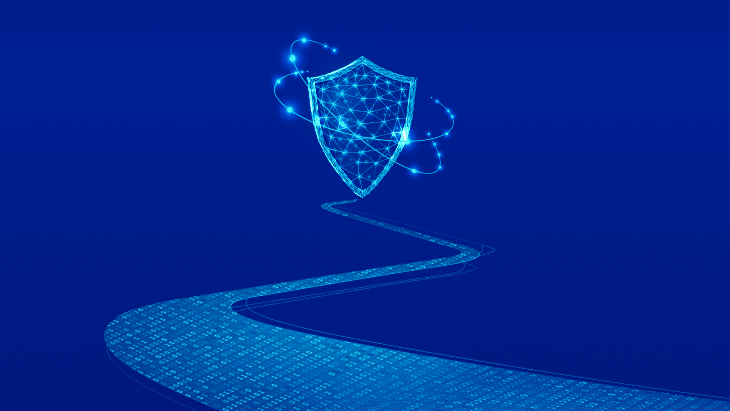
Types of Sensitive Data & Ways to Protect Them
Sensitive data can be defined as classified data that must be protected by various cyber security measures and cannot be accessed by unauthorized persons and third parties without privileged access authorization. Preserving sensitive data stacks in the electronic or physical environment does not change the data quality. In both cases, the sensitive data in question must be carefully protected against cyber threats.
It is very important that sensitive data access, which is one of the main issues to be considered while establishing data security, is provided through a cyber security network that will allow access only to privileged accounts, in order to prevent data breaches. On the other hand, you should not forget that an advanced structure that controls access to sensitive data may experience problems due to ethical or legal reasons. For this reason, it is paramount for organizations to control persons and applications with personal data access more strictly in a legal context, in compliance of the Personal Data Protection ACT and GDPR.
Types & Levels of Sensitive Data
There are different types of sensitive data with various security levels. There are primarily four types of sensitive data and there are three different levels of data sensitivity. Let's first have a look at different types of sensitive data, before proceeding to data sensitivity levels.
Sensitive data types
- Low sensitivity data : Data exposure in this category poses a low level of concern for individuals, private organizations, and government agencies. There is usually little or no access restriction to this data type, comprised of pieces of public information accessible to anyone.
- Moderate sensitivity data: This data is the subject of contracts involving two or more parties, constituting moderately sensitive data. The disclosure of such data can cause minimal harm to organizations. Examples of data in this category include student registrations, IT service information, building plans, and travel information.
- High sensitivity data: Violation of the data in this group, which is referred to as confidential data, may cause organizations to be exposed to different types of cyber attacks and to be penalized under both the Personal Data Protection Law and GDPR. Protected health data, IT security information, social security numbers, and controlled unclassified information, are included in this group.
- Restricted sensitive data: This data is protected under a Non-Disclosure Agreement (NDA), in order to minimize legal liability. Trade secrets, credit card details, intellectual property data, customer information, and training records, are examples of restricted sensitive data.
Sensitivity data levels
- Highly sensitive data: Special categories of exclusive personal data belong to this category. The breach of highly sensitive data can result in severely negative consequences. For example, violation of this data may cause organizations to experience great financial losses, besides leading to significant legal sanctions.
- Moderately sensitive data: Violating the confidentiality of such data for internal use does not create serious problems for organizations.
- Low sensitive data: The data in this group, which is at the bottom rung of the sensitivity level, is publicly available information.
Definition of Sensitive Data According to the Personal Data Protection Law and GDPR
The GDPR regulates highly sensitive personal data. Sensitive personal data refers to data that is more sensitive, such as name, IP address, location, etc. The GDPR insists that pseudonymous information should be used instead of information that directly identifies a person. However, the use of pseudonymous data may not prevent the breach of sensitive personal data, because sensitive personal data, including genetic and biometric data, can be traced back to their origins and decrypted due to their identifying nature. Therefore, using pseudonymous data alone may not be sufficient. Creating an IT infrastructure that offers end-to-end data and access security stands out as the most logical method.
According to the GDPR and the Personal Data Protection Law for Turkey, exclusive personal data, i.e. sensitive personal data, incorporates many different components:
- Race
- Political inclination, ethnicity, religion, philosophical belief, sect
- Appearance
- Association, foundation and union memberships
- Health information, sex life
- Criminal conviction, security
- Genetic information, biometric information
All these are included in the category of exclusive personal data under the GDPR and the Personal Data Protection Law.
How to Determine If Data is Sensitive?
Several different industries have agreed on a specific standard for measuring data sensitivity. The standard in question coalesces around three main elements, also called the CIA trio. The CIA triad includes the principles of confidentiality, integrity, and usability.
- Confidentiality: This policy includes directly preventing, not limiting, unauthorized access to sensitive data for users who do not have access authorization.
- Integrity: Relates to the consistency and accuracy of data over a certain period of time. You can control the consistency of data flow in your IT infrastructure with audit logs, file permissions, user access controls, backups, and cryptography.
- Usability: This policy focuses on sensitive data that is usable as needed. Among usability-specific measures are offering protection against data loss due to natural disasters, maintaining hardware, providing bandwidth.
The way to prevent the violation of the CIA triad is to take countermeasures. Countermeasures, including cybersecurity software and awareness training, can be listed as follows:
- Multi-factor authentication
- Data encryption
- Keychains
- Soft tokens
- Security tokens
- Biometric verification
- Only hard copy and storage
- Limiting where information appears and the number of transmissions
- Storage on disconnected storage devices
- Storage in computers with air gaps
Protect Sensitive Data
Privileged Access Management practices are one of the best ways to protect sensitive data, as they create an advanced cybersecurity network. Privileged Access Management (PAM) systems enable you to have advanced data security in your IT infrastructure by protecting sensitive data, and privileged accounts with access to this data. PAM applications, which provide access security against ransomware attacks, phishing, malware-like cyber attacks, and internal threats, help prevent data breaches and keep your sensitive data safe.
Our PAM solution, Single Connect, provides advanced IT infrastructure security, thanks to the advanced modules it contains. Restricting access to privileged accounts in your network with a zero trust policy, Single Connect also makes it possible to keep the passwords in the system in password safes isolated from the network. Single Connect, which also features two-factor authentication, simultaneously requests location and time information from users who request access to privileged accounts, and also automates routine tasks on the network, recording all user activity in the system, including database administrators.
As an internationally recognized PAM product, Single Connect can meet the data security needs of companies of different sizes and protect their sensitive data. Contact us to learn more about our Single Connect solution and consult with our expert team.
Other Blogs

TACACS Gets the Axe as Super-Regional Everstream Opts for Krontech’s PAM Solution












